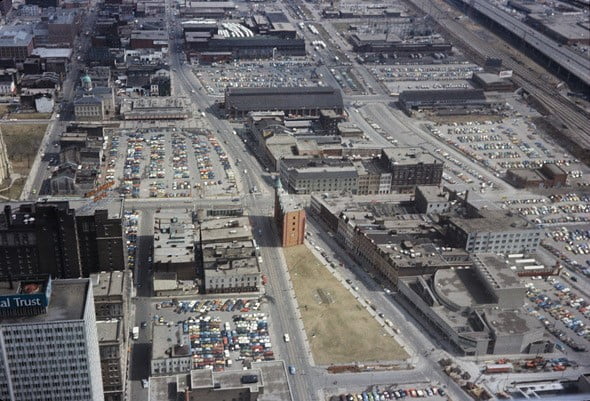Reflections on Scarborough’s downtown
I have some reflections on Alex Bozikovic’s March 28 article “Planners face huge hurdles in trying to create ‘vibrancy’ in Scarborough’s quasi-downtown”.
As a member of Oxford’s consultant team for this site, I wonder whether he may not recognize the opportunity that places such as Scarborough Centre represent to our City/Region. While it is true that there are significant challenges, there is also much to build on. While the author questions whether it is possible to create a place out of large areas of surface parking and flatted out employment uses next to the highway, he forgets that much of what exists in the shoulders of the downtown — the vibrant, walkable Saint Lawrence Neighbourhood or King West – was not too far from this state as recently as 40 years ago.

Yes, those areas are adjacent to the region’s largest employment centre, but to depict Scarborough Centre as devoid of such destination uses is a bit misleading. Over 17,000 people work in Scarborough centre, fewer than 20% of those in retail. This is just slightly fewer than in the oft-sited Liberty Village Neighbourhood. In addition, the area is both is an important civic and entertainment destination that attracts over 20 million visitors from across the GTA each year. Not bad.
While one could question the economic case for the current planned one-stop subway, the investment combined with commitment from key landowners such as Oxford with a long-term stake in the area creates real potential to kick-start significant change and reinvestment.
The challenge in my mind is two-fold.
First, to create a renewed sense of place for visitors and residents of the area. In this respect, both the City and Oxford, the area’s largest landowner, have big ambitions. Oxford’s large land holdings, long-term interests in the centre and expertise in creating attractive destination environments is a huge advantage in planning holistically for a more complete place. Oxford’s plan identifies a mix of uses structured around a diverse and granular system of new parks, streets, pedestrian connections and open spaces. It’s an opportunity that isn’t as easily obtainable in places with more fragmented land holdings, where investors may not have a long-term stake in an area and little incentive to coordinate with those around them. It creates pressure for Oxford to deliver on its vision, but also on the city to ensure that the design of the Scarborough station contributes to this more urban vision. Here’s hoping that future design refinements are in that vein.
Second, to transform Scarborough Centre into an attractive place for new jobs and investment. This is much harder. Much has been written in recent years about the challenge of transforming the region’s suburban centres into more competitive employment hubs. In the case of Scarborough Centre, a place with good freeway access, an existing mix of uses and plans for re-urbanization, the solution could come in the form of much better transit connectivity. While the subway will improve connectivity to the centre, more is needed to turn it from a place at the end of the line to somewhere at the centre of things. The extension of the planned subway or completion of a transit loop from Kennedy through Scarborough Centre, up and across to the Sheppard subway terminus would help to shift Scarborough Centre from the periphery to the centre of a rapid transit network. This would be further reinforced by the extension of a new transit corridor from the Centre to connect with UTSC, the planned Eglinton East LRT and Durham in the east.
While the routes and technology of these radiating connections could be up for debate, the idea would be to position Scarborough Centre at the hub of a more extensive, high capacity transit network. This would help to increase its potential catchment area for future employees and help to position the centre as a better location for business seeking the potential of a more connected and urban location, at prices much less than the core. It’s not unreasonable to imagine, and in fact elements of this are reflected in the latest RTP and city plans for the area.
No one said it would be easy, but to not recognize the potential of Scarborough centre — and avoid the pursuit of it — is to settle for the status quo.